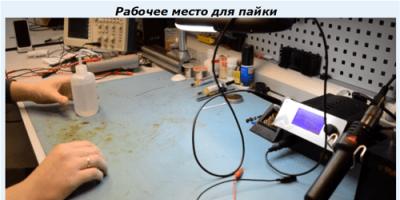The ovaries are paired organs that are of great importance during conception. It is in the ovaries that the egg is formed, which will subsequently connect with the sperm, and pregnancy will occur. Healthy ovaries are needed not only for conception; with their help, a woman’s overall hormonal background is created. Any disruption in their work entails serious complications, including infertility. The most common ovarian disease is the formation of cysts. These are benign tumors that can form in any woman.
How does a cyst form?
At a certain point in the menstrual cycle, a mature egg is released from the ruptured follicle, which is ready for fertilization. If there is a malfunction in the ovaries, and this can be due to various reasons, ovulation does not occur and conception does not occur. The unbursted follicle begins to grow and is filled with fluid inside. This is how atheroma is formed. It may appear alone, or polycystic disease may form - many small brushes. On ultrasound examination, this accumulation looks like a bunch of grapes.
Ovarian cysts increase in size over time. Inside they are filled with menstrual blood, and on a pelvic ultrasound they look like a bright spot. It can be confused with the corpus luteum, which dissolves on its own over time. Therefore, if an ovarian cyst is suspected, an ultrasound scan is performed again after three months. If a suspicious tumor does not resolve, but only increases in size, it is a cyst. If the atheroma is not removed in time, it may burst and all the accumulated blood will enter the abdominal cavity. This development of the situation threatens the occurrence of peritonitis.
The growing formation blocks the access of blood to the ovary and the tissue begins to die. If the disease is advanced, the organ will most likely have to be removed. If cystic formations have affected only one ovary, a woman has a chance of becoming pregnant, but if cysts have formed in two ovaries and caused great harm to the tissue, surgical intervention will be required. When two ovaries are removed, infertility occurs.
The appearance of cystic formations
At risk for this disease, first of all, are nulliparous women of reproductive age, girls who are just beginning their menstrual cycle, and women who have already reached menopause.
The main reasons for the appearance of cysts are:
- Internal organ injuries;
- Increased body weight;
- Malfunction of the thyroid gland;
- Tissue necrosis;
- The appearance of malignant or benign tumors;
- Poor nutrition;
- Climate change;
- Diabetes;
- Inflammatory processes of the genitourinary system;
- Failure of a woman's hormonal levels;
- Long-term use of hormonal drugs.
Most often, atheromas are formed due to inflammation of the internal genital organs. After treatment, the tissues on the ovaries become less elastic and cysts begin to form faster.
Symptoms
A woman's body signals the first signs of any gynecological disease with a disruption in the menstrual cycle. Too frequent or, conversely, infrequent periods are a serious cause for concern. Therefore, doctors recommend keeping a special calendar and marking the day of your period in it.
The first symptoms of ovarian atheroma are:
- Deterioration of the woman's general condition. Irritability, fatigue, and headache appear. This begins to change hormonal levels;
- Menstrual irregularities. Menstruation is accompanied by heavy bleeding and sharp cramps;
- Body weight may increase for no apparent reason;
- Lack of ovulation and resulting problems with pregnancy;
- Discharge in the middle of the cycle with streaks of blood.
When the first symptoms appear, the woman will urgently need to undergo a full examination of the pelvic organs.
Diagnostics by ultrasound
The sooner a woman comes to see a gynecologist, the better. Delaying the examination can only contribute to the further development of the disease.
The main diagnostic method is to identify an ovarian cyst using ultrasound. When examined, the walls of the ovaries appear thickened and gray in color. The size of the organs becomes larger.
Many patients ask the question: on what day of the cycle should an ultrasound be done? Doctors determine the optimal time for the study from the third to the fifth day after the end of menstruation. If you do an ultrasound later, the ovaries change slightly.
Additional means of identifying a cyst are:
- Laparoscopy. This method simultaneously diagnoses the disease and immediately removes unnecessary formations. Small incisions are made in the abdominal cavity and thin tubes are inserted. Recovery of the body after laparoscopy takes no more than two weeks.
- Blood tests for levels of male hormones, fats and insulin.
Treatment
An advanced disease can trigger the occurrence of a number of other diseases:
- The appearance of malignant tumors on the ovaries and adjacent pelvic organs;
- Endometriosis;
- Disease of the vascular system.
Treatment of cysts is most often complex: hormonal therapy and surgery. There is no point in hoping that the atheroma will resolve on its own; it can burst or lead to necrosis. Usually, after removal of the formation, hormonal treatment is recommended in order to restore the menstrual cycle and bring hormone levels into order.
Types of cysts
Depending on the causes of occurrence and accompanying symptoms, cysts are:
- Endometrial cyst. Everything inside the uterus is called the endometrium. If for some reason conception does not occur, the endometrium begins to be rejected by the uterus. This is how menstruation occurs. In certain cases, the endometrium may be located outside the uterus; this disease is called endometriosis. Neoplasms can attach to the wall of the ovary. After each monthly cycle, atheroma grows. A woman begins to experience pain during menstruation and deterioration in well-being. After an accurate diagnosis, the endometrial cyst is removed.
- Paraovarian cyst. Typically, such an atheroma is formed from the remains of an egg or embryological tissue. It does not cause any particular harm to women; it is detected during a routine examination by a gynecologist. A paraovarian cyst can cause discomfort during sexual intercourse and is treated with hormonal medications. Surgery is rarely performed.
- Follicular cyst. This is a benign tumor that occurs in the absence of ovulation. It is formed from a follicle and is filled with fluid inside. If the formation does not reach 5 centimeters, it may resolve after several menstrual cycles. With great physical exertion, this type of cyst can burst.
- Serous cyst. The cause of this type of cyst may be promiscuous sex life, frequent abortions with complications, or sexually transmitted diseases. A large serous cyst requires only surgical intervention.
If any type of cyst is detected on the ovary, mandatory treatment is required. Most cysts do not resolve, and if treatment is delayed, they can reach alarming sizes. The consequences can be very dire - from long-term hormonal treatment to removal of the ovaries and, as a consequence, the appearance of infertility. Timely diagnosis and properly selected treatment will help a woman cope with the disease.
First of all, let's define what it is ovarian cyst. So, it is a fluid-filled neoplasm located in the middle or on the surface of the ovary. It is worth noting that most often a cyst does not pose a great danger to health. In some cases, a neoplasm on a woman’s appendages may indicate the development of a more serious pathology.
The size of the cyst varies, sometimes amounting to several millimeters. In some cases they can reach several tens of centimeters. An interesting fact is that a neoplasm can occur in a completely healthy body, since every month a dominant follicle (small cyst) forms in one of the woman’s appendages.
Very often the dominant follicle bursts, but there are exceptions to the rule when it continues to grow, accumulating fluid. To avoid such cases, it is worthwhile to conduct a timely examination using ultrasound.
Today, functional cysts are very common and appear in the healthy bodies of young women. They do not harm women and resolve on their own within a couple of weeks or several months. A dermoid cyst is a benign tumor of the appendages. This neoplasm consists of tissues that are not characteristic of the ovaries and is large in size. These include various cartilages and bones. Very often, surgical method is used to remove them.
Hemorrhagic occurs in the process of hemorrhage into an ordinary cyst. In this case, the sick woman feels a nagging pain. Another type of neoplasm may also have similar symptoms. An endometriotic cyst is most often represented by a blood vesicle. In this situation, women experience very painful periods and aching pain in the lower abdomen.
It is also worth mentioning such a disease as polycystic ovary syndrome - this is the occurrence of a large number of cysts on the appendages. This disease is very common and contributes to the development of infertility, menstrual irregularities, and sometimes increases the level of male hormones in a woman’s body. Another type of neoplasm that reaches enormous sizes is called cystadenoma. All described cases are best diagnosed using ultrasound examination of the female appendages.
Ultrasound examination of an ovarian cyst
In obstetrics and gynecology, ultrasound is used to diagnose almost all diseases. This is modern a widely accessible way to study internal organs, based on echolocation. In particular, ultrasound of the ovary is absolutely harmless for patients, including during pregnancy. It has no side effects because the system uses ultrasonic vibrations.
Very often, to study cysts of the female appendages, specialists use transabdominal ultrasound. This device is a modern portable device. Before undergoing such a procedure, a woman should fill her bladder by drinking plenty of fluids an hour before the test. Pay attention to the photos below. This is approximately what an ovarian cyst looks like.

It is also worth noting that ovarian cysts can also be used to study transvaginal ultrasound. The transducer resembles the shape of a woman's vagina. Before using this method, be sure to find out if you have a latex allergy. If a specialist has prescribed this type of ultrasound, then you should take into account that you can drink liquid only 4 hours before the examination. In the photo below you can see the appearance of an ovarian cyst diagnosed during a transvaginal ultrasound.


It is worth mentioning that the ideal time to undergo an ultrasound is the period 3-5 days after the end of menstruation. During this period, the uterine mucosa is quite thin, which allows the specialist to make a better diagnosis and obtain a high-quality photo of the neoplasm.
So, Ultrasound of the ovaries is the most informative method for diagnosing cysts, allowing one to determine the size and location of neoplasms. Your doctor will provide you with an accurate description and diagnosis of the disease.
If you are diagnosed with a cyst, ask your specialist if you need to undergo additional tests, when you need to undergo the next ultrasound examination, talk about treatment methods. Do not forget that the treatment of ovarian cysts depends on the cause of the disease, the dynamics of development, and the woman’s age. You should also take into account the individual characteristics and characteristics of the body. A specialist will help you understand all this by prescribing the necessary treatment on an individual basis. Don't get sick, be healthy!
2008-02-28 14:02:18
Irina asks:
Hello. I am 20 years old. Just recently, according to gynecology, I was healthy. But an ultrasound of the abdominal cavity accidentally found a pedunculated cyst on the right ovary. Sdella ultrasound discovered a cyst on the right ovary and cysts on the left, possibly follicular. I did a repeat ultrasound. The indications are different: there is no cyst of the right ovary. In the left there are small follicles of increased echogenicity. I contacted several doctors. But their methods are alarming. Tell me: 1) what tests need to be done; 2) What analysis determines the type of cyst; 3) how to determine whether a doctor is good or not. 4) on what day of the cycle should an ultrasound be done? Thank you.
Answers Yaroshovets Natalya Sergeevna:
Good afternoon 1) First of all, you need to visit a specialist - a gynecologist. The doctor will be able to examine you and to confirm the diagnosis and find out the cause of the formation of the cyst, he will prescribe additional tests (blood for hormones, including hCG to exclude ectopic pregnancy, smear, tests for STDs, ultrasound in dynamics). Most cysts occur due to some hormonal imbalance. 2) The type of cyst can be determined by dynamic monitoring using ultrasound. If your cyst turns out to be functional, it will disappear on its own within 2-3 months. If the cyst turns out to be endometrioid, hormonal therapy and then laparoscopy are indicated; dermoid - treatment will be surgical. 3) You can determine a good doctor based on your personal feelings from communication and the recommendations of friends and relatives. Do not forget that if you are not satisfied with something about the doctor, you can always turn to another specialist. 4) Ultrasound must be performed dynamically, in different phases of the cycle, over a period of 2-3 months. It is advisable to carry out these studies on one device and, accordingly, by one doctor. Observe, get treatment and be healthy!
2010-03-01 18:39:05
Irina asks:
Hello! Dear doctors, I really need specialist advice on this issue:
I was born in 1984 (full 25 years old). I have a very desired third pregnancy: the first ended with the birth of a son in 2004, the second with a vacuum at 3 weeks in June 2007 (at that time I had dysplasia 3 b and doctors did not recommend developing the pregnancy, since the "bad" cells were also actively developing. There was also type 16 papilloma. Dysplasia was cured - long-term use of various medications and a laser in the end. After six months of taking hormones "Janine", which I finished at the end of October 2009. The doctor said that I was absolutely healthy and ready to conceive a child. All tests are excellent.) My last period was January 3, 2010. The cycle is not yet stable - it jumped from 27 to 33 days - the last 33 days. The penultimate 31 days. It is difficult to accurately determine the date of ovulation. Presumably on January 20-25. Sexual intercourse took place on January 20 and also somewhere on February 1-3 - I don’t remember exactly. Unfortunately. The Frau test showed a faint, barely visible second line on February 7th. At the same time, for a week now I have had severe fatigue, frequent urination, and a heightened sense of smell. On February 8, the result of a transvaginal ultrasound was a 40mm cervix, dimensions 55x46x44 mm, endometrium 12mm secretor. the uterine cavity is not deformed, the right ovary is 25x17 mm, the structure is follicular, the left one is 40x28, the structure is follicular, contains the corpus luteum in the form of a 2x0 (-) formation 18x20 mm - it’s difficult to make out, but it seems like I wrote everything correctly. The result is repeated after a while - the ultrasound diagnostician said that this is pregnancy up to 2 weeks if the test is positive. Ultrasound 02/24/2010 - number of fetuses: 1 diameter of the fetal egg 14x12 mm, condition of the uterine appendages - corpus luteum in the left ovary in the form of 2x0 (-) images. x20mm (or 220mm?), the features of the elements of the fetal egg are not determined. conclusion - 3 weeks, anembryonics? and I still can’t make out the word. but the diagnostician said that another formation like a cyst seems to be developing on the left ovary. and this anembryony has almost 100% nowhere to go - for cleaning. maximum - repeat the ultrasound in a week. The gynecologist didn’t even look at the results of the ultrasound; when she heard the word anembryonia, she said cleaning immediately - don’t wait until the bleeding starts - at your own risk, wait for the ultrasound to be repeated in a week. but then definitely cleaning. I also had spotting of a brown-brown color (not bloody, but just this dirty brown color) the first time on February 20, the third time and the third on February 21 - but a little and the consistency of normal discharge (a little - it’s literally a 2x1cm spotting spot) - not once in all for a while I was not bothered by any pain, nothing ached - neither my stomach nor my back. There were also blood-stained discharge after sexual intercourse in the first days of February - I mistakenly took them for the beginning of menstruation - but they were also small and disposable, of a uniform consistency (they stained less than half of the panty liner.) The child is very desirable, I am very afraid of an abortion, and more - its possible consequences. I don’t know whether to do a third ultrasound at such an early stage - maybe it will cause problems?? But it’s also scary to carry a frozen pregnancy - so as not to cause consequences and then not be able to get pregnant and give birth again. or again year after year to be treated. What other tests can I take - how long can I wait, because I am only worried about the usual “pregnancy signs” and the discharge is normal. Only for some reason my stomach is growing very quickly - as if it’s not a short period of time, but already the 4th month. And I still don't feel nauseous at all. Another 3 tests showed confident 2 stripes. I really look forward to your conclusions and advice. My doctor said “no one will save this, if pregnancy begins with such problems, it needs to be eliminated - and then get pregnant again for your health, this is not such a terrible problem.” And for us, this is our husband’s and my desired baby.... And also, if possible, tell me what sedatives I can take in this situation - I’m in tears for the fifth day. Sorry that everything is so detailed and thank you very much in advance for your advice.
Answers Strelko Galina Vladimirovna:
Dear Irina! To determine how well the pregnancy is developing, it is necessary to do a blood test for Human Chorionic Gonadotropin (HCG). In the early stages (up to 7 weeks from the last menstruation), the level of this hormone doubles every day or two. Thus, with a normally developing pregnancy, within 2-3 days it is possible to determine with a high degree of probability whether the hCG level is increasing correctly, and, accordingly, whether the pregnancy is developing correctly. Visualization of the fetal egg on ultrasound becomes possible when hCG values are 1000 or more (usually 4 weeks from the moment of fertilization). Without accurate data on the date of ovulation and hCG levels at the time of examination, it is difficult to interpret ultrasound data. It makes sense to maintain pregnancy if it develops normally (with proper growth of hCG). If the pregnancy does not develop, sooner or later a spontaneous abortion will occur. Sometimes this may be accompanied by heavy bleeding and pain. Parts of the fertilized egg may remain in the uterine cavity, causing prolonged bleeding and inflammatory complications. If the diagnosis of “non-developing pregnancy” is established, curettage of the uterine cavity is indeed recommended, including in order to examine the resulting material for the presence of genetic abnormalities (to determine at least one of the possible reasons for the arrest in the development of pregnancy).
Regarding sedatives - you can use herbal-based drugs (valerian, Persen, etc.).
2009-05-29 21:42:17
Irina asks:
Good afternoon.
in October 2008 I treated inflammation (citraferon, suppositories) and no infections were found. In January, after performing a routine ultrasound, the doctor discovered a formation of low echogenicity 40 (mm) - “chocolate cyst.” (End of cycle). Having consulted a gynecologist on the 1st day of the cycle, after a transvaginal ultrasound, a diagnosis of a homogeneous high-density echo-dense formation of 26 by 24 mm was made. Treatment: Diana 35 - 3 months = tumor marker CA-125. (result 31.4).
After five months of treatment, repeated transvaginal ultrasound showed (on the 7th day of menstruation) that the formation had increased by 33 * 30 * 26.
The gynecologist, without additional tests, diagnosed Endomitriotic CYSTOMA of the ovary without positive dynamics. Treatment: operative surgery.
Considering that I didn’t have an abortion or give birth, I’m scared to go for surgery. The question is: how could the doctor determine that the formation is a CYSTOMA? and also endromytriosis? what are the causes of its occurrence (previously she did not suffer from infectious diseases, she was regularly checked by doctors). Are the sizes of the cyst indicated above critical for surgery? Where should I go for the operation? and whether sick leave is given for this type of operation. thanks in advance
Answers Chubaty Andrey Ivanovich:
Good afternoon. The doctor correctly diagnosed cystoma. Any formation in the appendage area that cannot be treated within 3-4 months can only be treated surgically, regardless of size.
Removal of ovarian cysts of even the largest sizes laparoscopically.
Using a high-resolution camera allows you to very accurately see the boundaries of the cyst and remove the cyst exclusively within the healthy ovarian tissue. This allows you to preserve your ovarian reserve.
Ultrasound diagnostics - when to do the examination

In order not to miss the formation and development of cystic tumors in the appendages, it is necessary to carry out an annual preventive gynecological examination. Only a doctor can reliably evaluate the results of examinations....
The use of methods that involve surgery to treat cysts is not always advisable. In some cases, complete drug therapy is possible....
An ovarian cyst is a tumor-like neoplasm in the area of the uterine appendages, consisting of a fluid cavity.

Often the formation of pathological cavities in the ovaries is accompanied by changes in the endometrium. This occurs due to the same factors predisposing to pathologies....
The epithelium lining the inside of the cervical canal contains small glands that secrete a certain fluid. When their ducts become blocked, nabothian cysts form....
Treating
doctors
Our center employs the most experienced and qualified personnel in the region
Attentive
and experienced staff
Zhumanova Ekaterina Nikolaevna
Head of the Center for Gynecology, Reproductive and Aesthetic Medicine, Candidate of Medical Sciences, doctor of the highest category, Associate Professor of the Department of Regenerative Medicine and Biomedical Technologies of Moscow State Medical University named after A.I. Evdokimova, board member of the Association of Aesthetic Gynecologists ASEG.
- Graduated from the Moscow Medical Academy named after I.M. Sechenova, has a diploma with honors, completed clinical residency at the Clinic of Obstetrics and Gynecology named after. V.F. Snegirev MMA named after. THEM. Sechenov.
- Until 2009, she worked at the Clinic of Obstetrics and Gynecology as an assistant at the Department of Obstetrics and Gynecology No. 1 of the MMA named after. THEM. Sechenov.
- From 2009 to 2017 she worked at the Federal State Institution “Treatment and Rehabilitation Center” of the Ministry of Health of the Russian Federation
- Since 2017, he has been working at the Center for Gynecology, Reproductive and Aesthetic Medicine of Medsi Group of Companies JSC.
- She defended her dissertation for the degree of Candidate of Medical Sciences on the topic: “Opportunistic bacterial infections and pregnancy”
Myshenkova Svetlana Aleksandrovna
Obstetrician-gynecologist, candidate of medical sciences, doctor of the highest category
- In 2001 she graduated from the Moscow State Medical and Dental University (MGMSU)
- In 2003, she completed a course of study in the specialty “obstetrics and gynecology” at the Scientific Center for Obstetrics, Gynecology and Perinatology of the Russian Academy of Medical Sciences
- He has a certificate in endoscopic surgery, a certificate in ultrasound diagnostics of pathologies of pregnancy, fetus, newborn, in ultrasound diagnostics in gynecology, a certificate of a specialist in the field of laser medicine. He successfully applies all the knowledge acquired during theoretical classes in his daily practice.
- She has published more than 40 works on the treatment of uterine fibroids, including in the journals “Medical Bulletin” and “Problems of Reproduction”. He is a co-author of methodological recommendations for students and doctors.
Kolgaeva Dagmara Isaevna
Head of pelvic floor surgery. Member of the scientific committee of the association for aesthetic gynecology.
- Graduated from the First Moscow State Medical University named after. THEM. Sechenov, has a diploma with honors
- She completed clinical residency in the specialty “obstetrics and gynecology” at the Department of Obstetrics and Gynecology No. 1 of the First Moscow State Medical University. THEM. Sechenov
- Has certificates: obstetrician-gynecologist, specialist in laser medicine, specialist in intimate contouring
- The dissertation is devoted to the surgical treatment of genital prolapse complicated by enterocele
- The sphere of practical interests of Dagmara Isaevna Kolgaeva includes:
conservative and surgical methods of treating prolapse of the walls of the vagina, uterus, urinary incontinence, including the use of high-tech modern laser equipment
Maksimov Artem Igorevich
Obstetrician-gynecologist of the highest category
- Graduated from Ryazan State Medical University named after academician I.P. Pavlova with a degree in general medicine
- Completed clinical residency in the specialty “obstetrics and gynecology” at the Department of Obstetrics and Gynecology Clinic named after. V.F. Snegirev MMA named after. THEM. Sechenov
- Proficient in a full range of surgical interventions for gynecological diseases, including laparoscopic, open and vaginal access
- The scope of practical interests includes: laparoscopic minimally invasive surgical interventions, including single-puncture access; laparoscopic operations for uterine fibroids (myomectomy, hysterectomy), adenomyosis, widespread infiltrative endometriosis
Pritula Irina Alexandrovna
Obstetrician-gynecologist
- Graduated from the First Moscow State Medical University named after. THEM. Sechenov.
- She completed clinical residency in the specialty “obstetrics and gynecology” at the Department of Obstetrics and Gynecology No. 1 of the First Moscow State Medical University. THEM. Sechenov.
- She is certified as an obstetrician-gynecologist.
- Possesses the skills of surgical treatment of gynecological diseases on an outpatient basis.
- He is a regular participant in scientific and practical conferences on obstetrics and gynecology.
- The scope of practical skills includes minimally invasive surgery (hysteroscopy, laser polypectomy, hysteroresectoscopy) - Diagnosis and treatment of intrauterine pathology, cervical pathology
Muravlev Alexey Ivanovich
Obstetrician-gynecologist, gynecological oncologist
- In 2013 he graduated from the First Moscow State Medical University named after. THEM. Sechenov.
- From 2013 to 2015, he completed clinical residency in the specialty “Obstetrics and Gynecology” at the Department of Obstetrics and Gynecology No. 1 of the First Moscow State Medical University named after. THEM. Sechenov.
- In 2016, he underwent professional retraining at the State Budgetary Institution of Healthcare of the Moscow Region MONIKI named after. M.F. Vladimirsky, specializing in Oncology.
- From 2015 to 2017, he worked at the Federal State Institution “Treatment and Rehabilitation Center” of the Ministry of Health of the Russian Federation.
- Since 2017, he has been working at the Center for Gynecology, Reproductive and Aesthetic Medicine of Medsi Group of Companies JSC.
Mishukova Elena Igorevna
Obstetrician-gynecologist
- Doctor Mishukova Elena Igorevna graduated with honors from the Chita State Medical Academy with a degree in general medicine. She completed clinical internship and residency in the specialty “obstetrics and gynecology” at the Department of Obstetrics and Gynecology No. 1 of the First Moscow State Medical University. THEM. Sechenov.
- Mishukova Elena Igorevna has a full range of surgical interventions for gynecological diseases, including laparoscopic, open and vaginal access. He is a specialist in providing emergency gynecological care for diseases such as ectopic pregnancy, ovarian apoplexy, necrosis of myomatous nodes, acute salpingoophoritis, etc.
- Mishukova Elena Igorevna is an annual participant in Russian and international congresses and scientific and practical conferences on obstetrics and gynecology.
Rumyantseva Yana Sergeevna
Obstetrician-gynecologist of the first qualification category.
- Graduated from the Moscow Medical Academy named after. THEM. Sechenov with a degree in general medicine. She completed clinical residency in the specialty “obstetrics and gynecology” at the Department of Obstetrics and Gynecology No. 1 of the First Moscow State Medical University named after. THEM. Sechenov.
- The dissertation is devoted to the topic of organ-preserving treatment of adenomyosis using FUS ablation. He has a certificate as an obstetrician-gynecologist and a certificate in ultrasound diagnostics. Proficient in the full range of surgical interventions in gynecology: laparoscopic, open and vaginal approaches. He is a specialist in providing emergency gynecological care for diseases such as ectopic pregnancy, ovarian apoplexy, necrosis of myomatous nodes, acute salpingoophoritis, etc.
- Author of a number of published works, co-author of a methodological guide for doctors on organ-preserving treatment of adenomyosis using FUS ablation. Participant of scientific and practical conferences on obstetrics and gynecology.
Gushchina Marina Yurievna
Gynecologist-endocrinologist, head of outpatient care. Obstetrician-gynecologist, reproductive specialist. Ultrasound diagnostics doctor.
- Gushchina Marina Yurievna graduated from Saratov State Medical University. V.I. Razumovsky, has a diploma with honors. She was awarded a diploma from the Saratov Regional Duma for excellent achievements in studies and scientific activities, recognized as the best graduate of Saratov State Medical University named after. V. I. Razumovsky.
- She completed a clinical internship in the specialty “obstetrics and gynecology” at the Department of Obstetrics and Gynecology No. 1 of the First Moscow State Medical University. THEM. Sechenov.
- He is certified as an obstetrician-gynecologist; ultrasound diagnostics doctor, specialist in laser medicine, colposcopy, endocrinological gynecology. She has repeatedly completed advanced training courses in “Reproductive Medicine and Surgery” and “Ultrasonic Diagnostics in Obstetrics and Gynecology.”
- The dissertation work is devoted to new approaches to differential diagnosis and management tactics for patients with chronic cervicitis and early stages of HPV-associated diseases.
- Proficient in the full range of minor surgical interventions in gynecology, performed both on an outpatient basis (radiocoagulation and laser coagulation of erosions, hysterosalpingography) and in a hospital setting (hysteroscopy, cervical biopsy, cervical conization, etc.)
- Gushchina Marina Yuryevna has more than 20 scientific published works, is a regular participant in scientific and practical conferences, congresses and conventions on obstetrics and gynecology.
Malysheva Yana Romanovna
Obstetrician-gynecologist, gynecologist for children and adolescents
- Graduated from the Russian National Research Medical University. N.I. Pirogov, has a diploma with honors. She completed clinical residency in the specialty “obstetrics and gynecology” at the Department of Obstetrics and Gynecology No. 1 of the Faculty of Medicine of the First Moscow State Medical University. THEM. Sechenov.
- He is certified as an obstetrician-gynecologist, ultrasound diagnostics doctor, specialist in laser medicine, pediatric and adolescent gynecology.
- Proficient in the full range of minor surgical interventions in gynecology, performed both on an outpatient basis (radiocoagulation and laser coagulation of erosions, cervical biopsy) and in a hospital setting (hysteroscopy, cervical biopsy, cervical conization, etc.) Abdominal organs
- She completed clinical residency in the specialty “Obstetrics and Gynecology” on the basis of the department of the Federal State Budgetary Educational Institution of Additional Professional Education “Institute for Advanced Training of the Federal Medical and Biological Agency.”
- He has certificates: obstetrician-gynecologist, specialist in the field of colposcopy, non-operative and operative gynecology of children and adolescents.
Baranovskaya Yulia Petrovna
Ultrasound diagnostics doctor, obstetrician-gynecologist, candidate of medical sciences
- Graduated from the Ivanovo State Medical Academy with a degree in general medicine.
- Completed an internship at the Tambov Regional Clinical Hospital, specializing in obstetrics and gynecology.
- He is certified as an obstetrician-gynecologist; ultrasound diagnostics doctor; specialist in the field of colposcopy and treatment of cervical pathology, endocrinological gynecology.
- Repeatedly took advanced training courses in the specialty “obstetrics and gynecology”, “Ultrasonic diagnostics in obstetrics and gynecology”, “Fundamentals of endoscopy in gynecology”
- Proficient in the full range of surgical interventions on the pelvic organs, performed by laparotomy, laparoscopic and vaginal approaches.
The ovaries are a paired organ; they ensure the stability of hormonal levels, which is necessary to maintain the functioning of the reproductive system. They form eggs that are capable of fertilization. A woman's menstrual cycle is regulated by the ovaries; they affect the general condition of the body as a whole.
Ultrasound gynecological examination of the appendages is a very popular medical procedure; it is prescribed to women for diagnostic purposes and to monitor their functional activity. In case of hormonal imbalances or pathological processes in the female area, an ultrasound of the appendages is prescribed.
Indications for ultrasound of the ovaries
The structure of the ovaries is such that it undergoes certain changes every month. So, for example, normally follicles are formed, of which one will become dominant, and it is in it that the future egg will be formed. Next, hormones are synthesized and ovulation occurs, resulting in the formation of the corpus luteum. This whole process necessarily affects the structure of the ovaries and is reflected during an ultrasound examination. By dynamically monitoring this process using ultrasound, the doctor can fully evaluate their work.
When is an ultrasound of the internal female organs prescribed? Usually in the following cases:
- painful menstruation;
- irregular menstrual cycle;
- inflammatory processes in the pelvic organs;
- pain in the lower abdomen;
- suspicion of the occurrence of neoplasms of the pelvic organs;
- preparation for pregnancy;
- monitoring the functioning of the appendages;
- infertility;
- preventive examinations;
- mastopathy;
- heavy or scanty menstrual bleeding.

 Ultrasound of the appendages is also prescribed for diagnosing infertility. Ultrasound helps to see pathological processes of various origins and identify the cause of the disease
Ultrasound of the appendages is also prescribed for diagnosing infertility. Ultrasound helps to see pathological processes of various origins and identify the cause of the disease Ultrasound examination allows timely identification of various pathologies of the female genital area. Using ultrasound, various formations are diagnosed, such as cysts, tumors or polycystic deformity.
A cyst is a fluid-filled bubble that can be located both on the surface and inside the ovary. On ultrasound, the cyst looks like a dark bubble with a thin outline. It must be borne in mind that ultrasound examination can only determine the structure of the cyst, but not the origin of this cyst.
When planning pregnancy, gynecologists often refer patients for folliculometry - assessment of follicle development. The dynamics of follicle growth is carried out using ultrasound.
When and how is diagnosis carried out?
Ultrasound examination is done in three ways:
- transrectal.
Transvaginal ultrasound gynecological examination carried out using a special sensor, which is inserted into the vagina. Data obtained using this ultrasound method are highly informative and reliable, since the transvaginal sensor has maximum access to the organs being studied.
Transabdominal ultrasound examination done with an external sensor, through the abdominal wall. This method, unlike the transvaginal one, is less informative, since it can only detect obvious gross pathology of organs.
 Transabdominal ultrasound is less informative than transvaginal ultrasound. It allows us to identify only obvious gross pathologies. This is due to the fairly large distance from the sensor to the organs being examined.
Transabdominal ultrasound is less informative than transvaginal ultrasound. It allows us to identify only obvious gross pathologies. This is due to the fairly large distance from the sensor to the organs being examined. Transrectal ultrasound(through the rectum) is done only when it is necessary to diagnose girls who are not sexually active. It is used extremely rarely.
The patient should take into account some rules regarding when to conduct a gynecological examination. Typically, gynecological examination should be carried out on certain days of the cycle. In addition, the purpose for which the diagnosis is carried out matters. So, to assess their condition and check for the presence of pathologies, an ultrasound examination must be done immediately after the end of menstrual bleeding, preferably from the 5th to the 7th day of the cycle.
If the purpose of diagnosis is to determine the functional activity of the ovaries or monitor the formation of follicles, then the procedure must be done on those days that are recommended to the patient by the attending physician. This is due to the fact that a woman’s reproductive system goes through several phases of development over the course of a month, and therefore, in order to determine the causes of certain pathologies, it is necessary to observe each phase over time. This is especially true for diagnosing the causes of infertility or hormonal imbalance.
How to prepare for the study and how does it go?
Before you take the test, you need to prepare for it. This is important for obtaining reliable results. Such preparation does not imply significant restrictions in nutrition or in taking medications, and there are no health restrictions that prevent this procedure.
Depending on the chosen method of ultrasound examination, a number of points must be observed. This applies to transabdominal examination: its implementation requires that the patient’s bladder be full during the examination. To do this, it is recommended to drink about a liter of still water before the test. This contributes to better visualization of the organs being examined. The bladder is emptied only after the procedure is completed.
Often during a transabdominal examination, accumulations of gases in the abdominal cavity interfere with its conduct, so before the procedure you can take medications that help get rid of gases.
Transvaginal ultrasound examination does not require special preparation, the main thing is to maintain genital hygiene. During the study, a condom is placed on the sensor to prevent infection from entering the woman’s genitals.
If a transrectal ultrasound is to be performed, then it is necessary to carry out cleansing procedures for the rectum. To do this, on the eve of the test day, it is necessary to give a cleansing enema using approximately 300 mm. water. In addition, in order to avoid the accumulation of gases in the intestines, it is necessary to temporarily exclude foods that cause increased gas formation from the diet.
The ultrasound examination procedure for the abdominal method is as follows: the woman should lie on the couch with her back down, while the lower part of the torso is freed from clothing. The gel is applied to the surface of the abdomen and the doctor injects it with a special sensor into the area under study. The sensor transmits an image of the organs, and thus the doctor evaluates them.
If a transvaginal ultrasound is being performed, it is also necessary to lie on the couch, on your back and take a comfortable position with your knees bent. The insertion of the sensor should not cause discomfort in the patient. Regardless of the method of using the ultrasonic sensor, the examination procedure takes about 15-20 minutes. Usually ultrasound is performed in combination with the last two methods.
What should be the normal ovarian parameters based on ultrasound results?
During the study, the ultrasound physician must determine the size of the ovaries, their structure and location relative to the uterus. Normally, they should be located on the sides of the uterus. The size of the ovaries of a woman of reproductive age must meet the following standards:
- in a volume from 5 to 8 cm per cube.;
- length from 25 to 40 mm;
- in width from 15 to 30 mm;
- thickness from 10 to 20 mm.

 Normally, the ovaries are located on both sides of the uterus and have the same round shape. After the diagnosis, the doctor compares the results with normal values and makes a diagnosis.
Normally, the ovaries are located on both sides of the uterus and have the same round shape. After the diagnosis, the doctor compares the results with normal values and makes a diagnosis. The norm of indicators changes depending on which phase the woman’s cycle corresponds to. An increase in volume can occur against the background of follicle growth or the formation of physiological cysts. But if the difference in volume is significant, then this may indicate the development of some pathology or a congenital anomaly. The overall size is influenced by the following factors: the day of the menstrual cycle, taking hormonal contraceptives, and the state of pregnancy. These factors must be taken into account when interpreting ultrasound results.
The size can be increased with various diseases, such as polycystic disease and oophoritis. If the ovaries correspond to the norm, then their structure should be uniform, the contours should be clear and bumpy, since follicles grow in them. A change in these parameters may indicate the presence of inflammatory processes in them. However, only doctors interpret ultrasound results.
Normally, in the middle of the cycle, the ovaries should have several follicles ranging in size from 4 to 6 mm. A normal dominant follicle should reach a size of up to 20 mm. If the size of the dominant follicle is larger, this may indicate the formation of a follicular cyst. On ultrasound, the cyst looks like a liquid formation, the diameter of which reaches more than 25 mm. With a follicular cyst, the size can be up to 10 cm. Follicular cysts usually resolve on their own after several cycles.
Does ultrasound detect malignant ovarian tumors?
According to statistics, ovarian cancer is quite common and occupies a leading place among malignant neoplasms in women. Ultrasound examination is important in the diagnosis of malignant neoplasms, since cancer is visualized quite well on ultrasound. During the examination, the doctor must determine how affected the ovaries are, whether the damage has affected one or both organs, and whether there are foci of infiltration. Using ultrasound, you can determine the stages of the disease, such as primary cancer, secondary cancer and metastases. In addition, ultrasound examination reveals echo signs of all existing types of cancer. Depending on their echographic structure, 4 types are distinguished:
- cystic;
- solid;
- cystic-solid;
- solid-cystic.

 Ovarian cancer is very well visualized on ultrasound. The image allows you to see the size and location of the malignant lesion
Ovarian cancer is very well visualized on ultrasound. The image allows you to see the size and location of the malignant lesion Signs of cancer that appear during ultrasound are varied. There are so-called ultrasound markers that can be used to suspect the development of cancer:
- the size of the ovaries has a pronounced asymmetry, the contour of the cancer-affected organ is enlarged and only partially defined;
- a postmenopausal woman has a formation on the ovary, similar in shape to a follicle or cyst;
- increased blood supply to the affected area;
- in the retrouterine space, the presence of free fluid is determined, which is not associated with ovulation.
If an ultrasound reveals at least one of these signs, the doctor will prescribe medical observation of changes in the ovaries for one to two months. If more than two signs are detected, the woman is referred for consultation to an oncologist-gynecologist as a matter of urgency. In addition, it is necessary to undergo an examination of the mammary glands, thyroid gland, abdominal organs and lymph nodes. This is necessary in order to determine the presence of metastases in these organs.
To diagnose cancer, a transvaginal gynecological examination is performed. Ultrasound is the fastest and easiest method for diagnosing cancer. But it is necessary to keep in mind that a diagnosis cannot be made only on the basis of this study. It requires additional confirmation through other methods. Using ultrasound, you can evaluate suspicious changes in the organ, but deciphering them is within the competence of the doctor.










